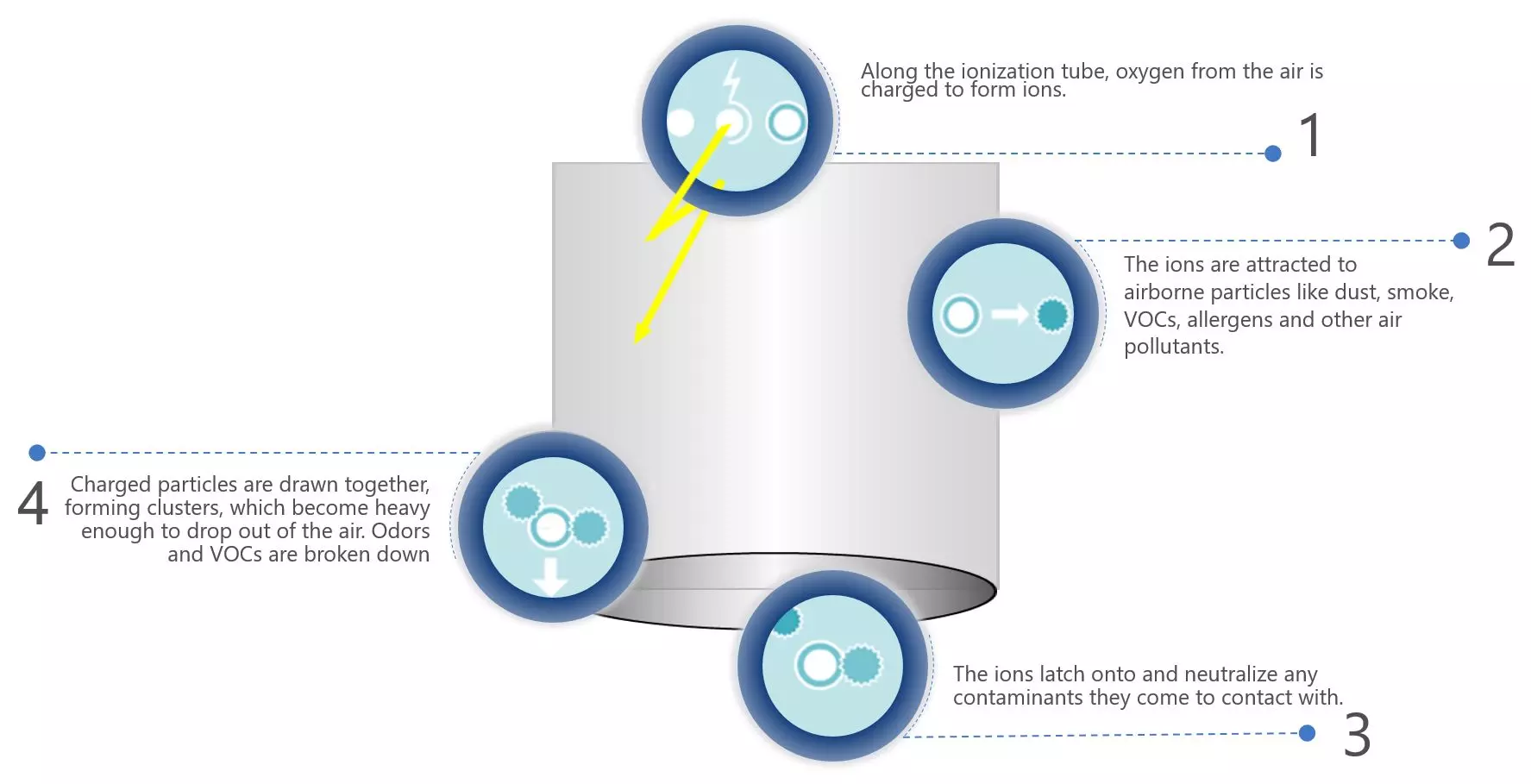Bi-polar ionisation
Improves air hygiene and removes odors.
How does ionisation work?
Bi-polar ionisation represents an advanced method in air purification, based on the principle of high voltage. With ionisation tubes at high voltage, separated by an insulating barrier, a critical process is activated: the ionisation of oxygen atoms.
The process begins when oxygen (O2) from the air is charged to form ions (O1). These ions are attracted to airborne particles such as dust, VOCs (volatile organic compounds), allergens, and other air pollutants. They latch onto and neutralize any contaminants they come to contact with including miro-organism and odours. The charged particles clump together to form larger clusters, which eventually become heavy enough to fall out of the air or are catched in a filter.
The use of bi-polar ionisation results in air that is fresh and vibrant, parallel to that experienced in natural outdoor environments.
The advantages
In nature, ions are naturally abundant in many places, especially during storms, near waterfalls, and by the sea. These ions contribute to a self-cleaning effect in the air.
In indoor environments, ions are virtually absent. Ionisation technology effectively replicates this natural cleaning mechanism, leading to a noticeable improvement in air quality. It breaks down odours and ensures the air is free from contaminants.
Creates a comfortable odour free climate
Hygienic air with fewer viruses, bacteria and moulds
Reduces VOCs
Very low energy consumption

The key difference between UV technology and ionisation
UVC light and bi-polair air ionisation are two very different technologies. Both can be used to remove micro-organisms from an airstream, but the key difference is that ionisation also works in the room where the air is supplied to.
Want to know more? Watch the short film 'The difference'.




